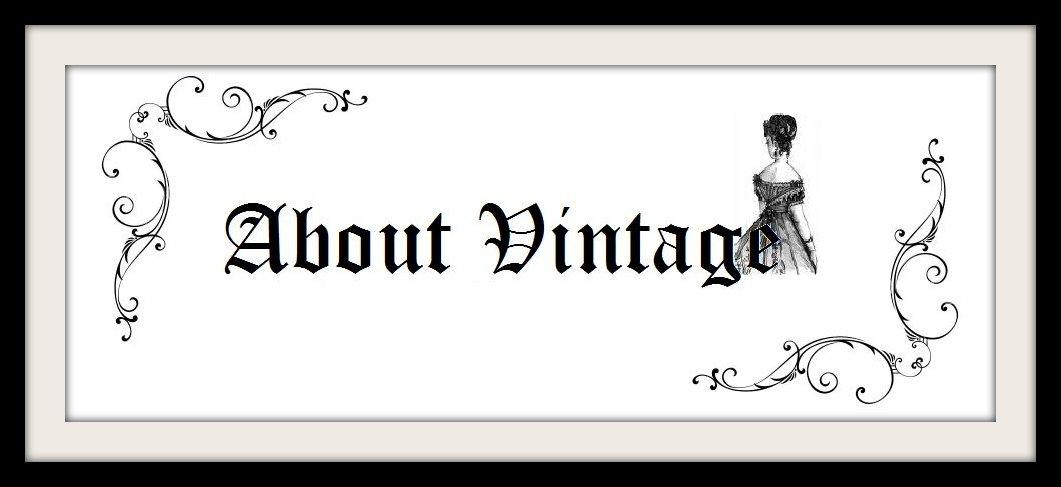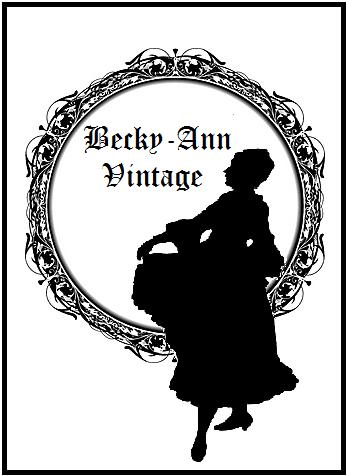
Everything you need to know about all things Vintage. From dating pieces, to picking a fake and even what those Vintage terms mean.
In the past few years the popularity of vintage clothing has increased, greatly because of Hollywood starlets such as; Mischa Barton and Nicole Richie. However, the greatest Vintage icon has to be English fashion princess Sienna Miller, who single handedly brang back the 1970's Boho look, with her tooled leather bags and boots and unique vintage vests and belts. The uniquiness and sometimes quirkiness vintage pieces add to an outfit is the reason why vintage pieces have become so popular agmonst many women and men interested in creating an individual, sassy look. Most vintage pieces are one-off's so the chances of running into a person wearing your same vintage piece is extremely rare. Vintage clothing is also very appealing due to the high quality structure of the garments, which were often handmade to last a lifetime. This exceptional quality and design is one of the reasons why vintage clothing can still be found in perfect condition today.
So what is considered Vintage?
The term vintage in regards to clothing and accessories means a piece that is post 1920's and pre 1990. Any items pre-1920 are regarded as Antique and are extremely rare and often highly expensive to purchase.Vintage clothing and accessories may be new from a past era or second-hand pieces. Most items however are second-hand with only a small percentage having never been worn. Some sellers use the term vintage loosely, and regard any second-hand item as vintage, which is not correct in order to be vintage it must be from the 1980's or earlier.
So how do you determine if an item is genuine vintage?
Just a quick ebay search for "Vintage" in the fashion section shows over 7000 results, so how do you pick a genuine piece? Firstly make sure you read the entire listing as some headlines may say "Vintage dress" but in the description the dress is described as "Vintage styled", I too have been caught out this way. When purchasing off eBay I suggest asking the seller how the came to have the item, whether it was an estate piece, their own piece from a past decade or store bought, often their answer gives an insight to the pieces origin, hence it's authenticity. Look for multiple items, if you find the same item multiple times or in a variety of colours, chances are it's not vintage. Vintage garments were often hand-made to order, and therefore do not exist in multiple quanities. Another tip is to look at the fabric, Vintage garments pre-1980 will not be made from polyester therefore, if you find an item labelled as a 1960's dress that made of polyester or polyester blend chances are it's a preproduction and not the original thing. Look at the zips and tags. Vintage pieces which are pre-1980 will have metal zips not plastic zips, which are an indicator or a more modern garment. The tags of vintage items will most likely be hand-stitched and not machine made, however many vintage pieces do not contain tags, especially if they are handmade. Visit the "Vintage Fashion Guilds" Label Resource for Information about clothing tags and their origins.
Dating Jewellery
Vintage jewellery is proberly one of the hardest things to determine if it's genuine or not without being an expert. The easiest way to determine if the piece is vintage or not is to see if the items are stamped. Many pieces are labelled with the companies logo or numbers. Most vintage costume jewellery was made from several high class companies. Each of these companies were and some still are great producers of costume and fine jewellery from as early as the 1920's. These companies include; Barclay, Linser, Coro, Sarah Coventry, Trifarim, Whiting Davis, Hobe, Napier and Eisenberg. Items from such companies are very sought after and vaulable. For more information on these companies and their fine pieces as well as general Information about vintage Jewellery Visit "The collectors Index" .
Some Vintage Terms you may be curious about..
Rockabilly: You have proberly seen items described as "Rockabilly" but wondered what it means. The term "Rockabilly" refers to the 1950's Rock and Roll scene and can only be described as flared skirts, poka dots and red lips. Think swing dancing, Elvis and Soda Pops.
Kitsch: Term Kitsch has recently taken upon a new meaning which is acting as a polar opposite to its original meaning of tacky-art. The term kitsch refers to an item or style that is based upon a past style or era, Typically kitsch items are based on the 1940's pin-up style and include sailor styled clothing and accessories.
Retro: Retro fashion refers to that of the 1970-1980's. Think bold bright patterns, plastic jewellery, huge sunglasses, wedges and coloured blazers.
Boho: Boho is a short term for Bohemian. Boho fashion is characterlised by it's earthy tones, organic shapes and simplicity. Boho clothing and accessories take a new age spin on the "Hippy" fashion of the 1970's. Popular Boho pieces include; wooden bangles, tooled leather saddle bags, beaded and very detailed earrings and the lastest craze the Native American styled headband Al-ah Nicole Richie.
Circa: Many vintage items are described as Circa then a year. Circa merely means "about" or "around". For example: Circa 1920's Means that the item was around in the 1920's
Demi Parure: French origins, refers to a 2 or 3 piece set of matching jewellery, usually consisting on earrings, pin and necklace.
